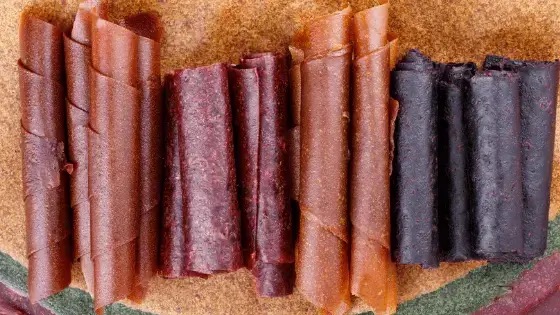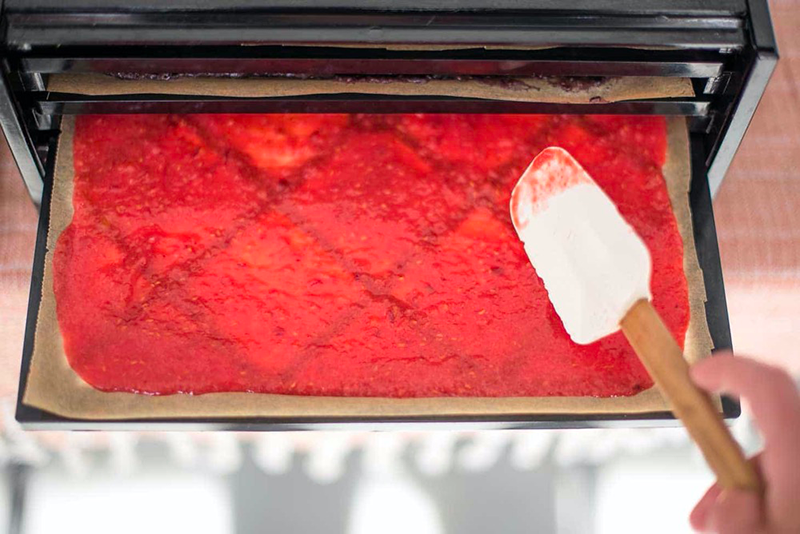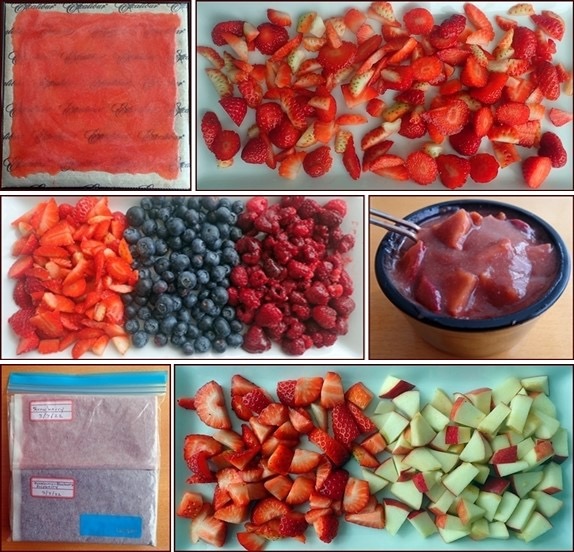
Content Menu
● What is Fruit Leather?
● Benefits of Using a Food Dehydrator
● Ingredients Needed
● Equipment Required
● Step-by-Step Instructions
>> 1. Prepare Your Fruit
>> 2. Make the Puree
>> 3. Spread the Puree
>> 4. Set the Dehydrator
>> 5. Check for Doneness
>> 6. Cool and Cut
>> 7. Store Properly
● Tips for Success
● Flavor Variations
● Visual Guide
● Common Mistakes to Avoid
● Conclusion
● Frequently Asked Questions
>> 1. What fruits work best for making fruit leather?
>> 2. Can I use frozen fruits?
>> 3. How do I know when my fruit leather is done?
>> 4. Can I add spices to my fruit leather?
>> 5. How should I store my fruit leather?
● Citations:
Making fruit leather is a delightful way to preserve fruits while creating a healthy snack. Using a food dehydrator simplifies the process, allowing you to enjoy homemade fruit leather without the added preservatives found in store-bought versions. This guide will walk you through the steps of making fruit leather, tips for success, and answers to common questions.

What is Fruit Leather?
Fruit leather is a chewy, concentrated form of fruit that has been pureed and dried. It retains much of the fruit's flavor and nutrients, making it a popular choice for snacks, lunchboxes, or as a hiking treat.
Benefits of Using a Food Dehydrator
- Nutritional Retention: Dehydrators operate at lower temperatures than ovens, preserving more nutrients.
- Flavor Concentration: The drying process intensifies the natural sweetness and flavor of the fruit.
- Convenience: Dehydrators allow for hands-free operation, letting you prepare other tasks while your fruit leather dries.
Ingredients Needed
- Fruits: Choose ripe fruits like strawberries, apples, mangoes, or peaches. You can also mix different fruits for unique flavors.
- Sweeteners (Optional): Honey, maple syrup, or sugar can be added if desired.
- Lemon Juice (Optional): Helps preserve color and adds a slight tang.
Equipment Required
- Food dehydrator
- Blender or food processor
- Parchment paper or silicone dehydrator sheets
- Rubber spatula
- Airtight container for storage
Step-by-Step Instructions
1. Prepare Your Fruit
Start by washing and preparing your fruit. If using apples or pears, peel them if desired. Remove any seeds or stems.
2. Make the Puree
Place your prepared fruit into a blender or food processor. Blend until smooth. For every two cups of fruit puree, consider adding one tablespoon of lemon juice to enhance flavor and color retention.
Example Recipe
- 2 cups strawberries
- 1 cup applesauce (for added sweetness)
- 1 tablespoon lemon juice
3. Spread the Puree
Line your dehydrator trays with parchment paper or silicone sheets to prevent sticking. Pour the fruit puree onto the trays, spreading it evenly to about 1/8-inch thickness using a rubber spatula.

4. Set the Dehydrator
Set your food dehydrator to 135°F (57°C) and let it run for approximately 6 to 8 hours. The drying time may vary based on humidity and thickness of the puree.
5. Check for Doneness
After about 6 hours, check your fruit leather by gently pressing it with your fingers. It should be dry to the touch without any sticky spots. If there are indentations or wet areas, continue drying.
6. Cool and Cut
Once dried, remove the trays from the dehydrator and let the fruit leather cool completely. Use scissors or a knife to cut it into strips or roll it up for storage.
7. Store Properly
Store your homemade fruit leather in an airtight container at room temperature for up to one month. For longer storage, refrigerate or freeze it.
Tips for Success
- Choose Ripe Fruits: The riper the fruit, the sweeter and more flavorful your leather will be.
- Experiment with Flavors: Combine different fruits like bananas with strawberries or add spices like cinnamon for a unique twist.
- Avoid Over-Drying: Keep an eye on your fruit leather; over-drying can make it too tough.
Flavor Variations
To keep things exciting, consider trying these flavor combinations:
- Strawberry Banana: Blend ripe strawberries with bananas for a sweet treat.
- Mango Peach: A tropical mix that's perfect for summer snacking.
- Apple Cinnamon: Use applesauce as a base and add cinnamon for warmth.
- Berry Medley: Combine blueberries, raspberries, and blackberries for a tart flavor explosion.
Visual Guide
To enhance understanding, consider adding visuals at each step:
1. Preparing Fruits: Show images of washed and cut fruits.
2. Making Puree: Include photos of blended fruit.
3. Spreading Puree: Display how to evenly spread on trays.
4. Dehydrating Process: Capture images of dehydrators in action.
5. Final Product: Showcase rolled-up strips of fruit leather.
Common Mistakes to Avoid
When making fruit leather in a food dehydrator, it's important to be aware of common pitfalls:
- Not Using Enough Pectin-Rich Fruits: High pectin fruits like apples help bind the mixture together, preventing cracks in your leather.
- Inconsistent Thickness: Ensure that you spread the puree evenly across the tray; uneven thickness can lead to some parts drying faster than others.
- Ignoring Humidity Levels: In humid environments, drying times may increase significantly; be patient and check frequently until fully dried.
Conclusion
Making fruit leather in a food dehydrator is an enjoyable process that results in delicious snacks perfect for any occasion. With just a few simple ingredients and steps, you can create healthy treats that are free from artificial additives.

Frequently Asked Questions
1. What fruits work best for making fruit leather?
Fruits with high pectin content like apples and plums work best because they create a nice texture when dried.
2. Can I use frozen fruits?
Yes! Just thaw them before blending into puree.
3. How do I know when my fruit leather is done?
It should be dry to touch without any sticky spots; pressing it should leave no indentation.
4. Can I add spices to my fruit leather?
Absolutely! Spices like cinnamon or vanilla extract can enhance flavor significantly.
5. How should I store my fruit leather?
Keep it in an airtight container at room temperature or refrigerate/freeze for longer shelf life.
Citations:
[1] https://www.gettystewart.com/how-to-make-fruit-leather-in-a-dehydrator-or-oven/
[2] https://www.freshoffthegrid.com/diy-fruit-leathers/
[3] https://septree.com/blogs/news/how-to-make-fruit-leather-in-a-food-dehydrator
[4] https://www.instructables.com/Homemade-Fruit-Leather/
[5] https://www.heatherschoice.com/blogs/journal/recipes-for-adventure-backcountry-friendly-fruit-leathers
[6] https://slowlivingkitchen.com/how-to-make-fruit-leather/
[7] https://homesteadingfamily.com/easy-fruit-leather-recipe/
[8] https://www.tastecelebration.com/fruit-leather-from-fruit-and-vegetables-of-the-season/
[9] https://kowalskimountain.com/how-to-make-fruit-leather-in-a-dehydrator/
[10] https://coloradosundays.com/recipes/how-to-make-fruit-leather/











